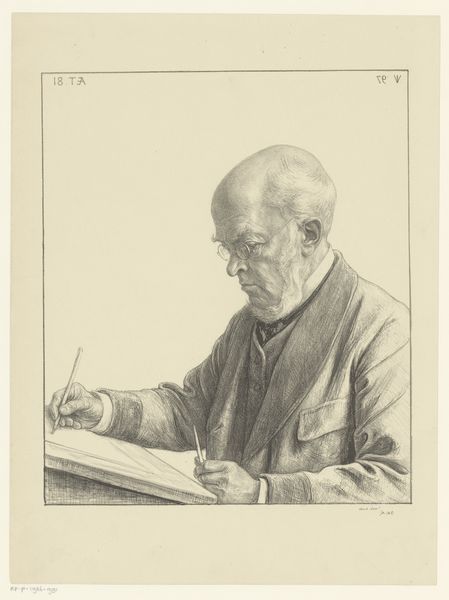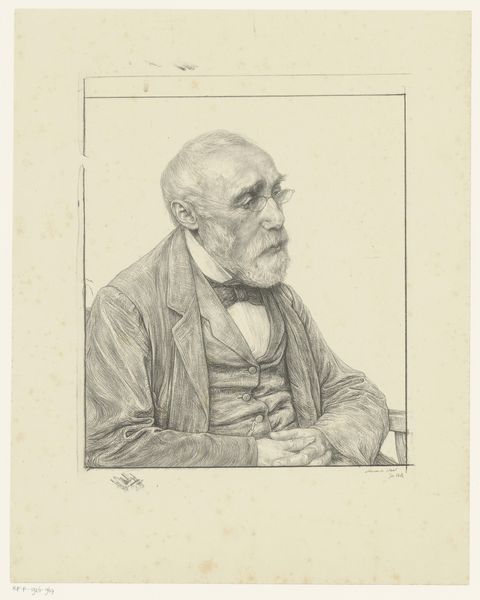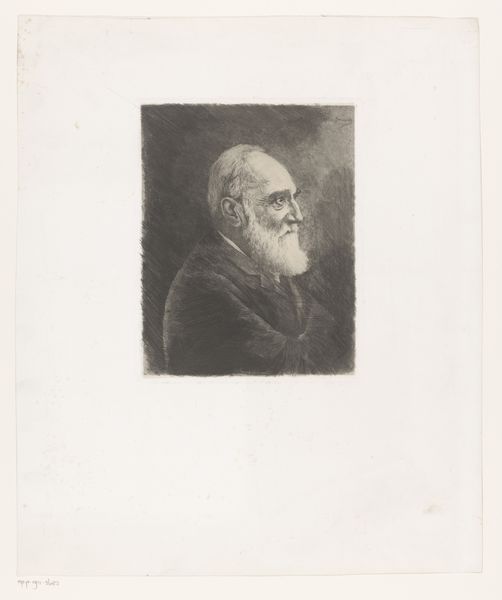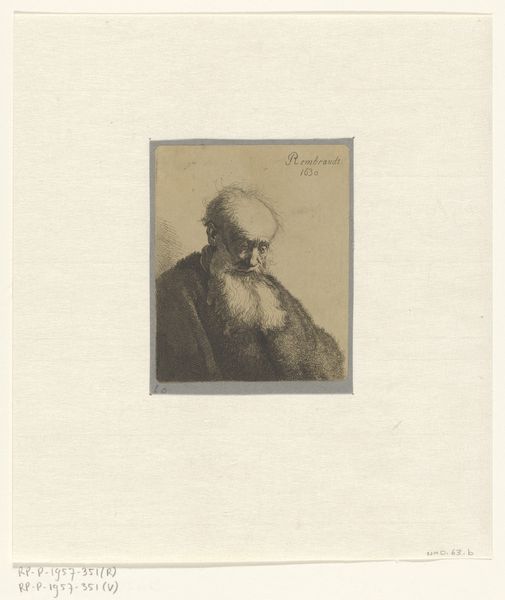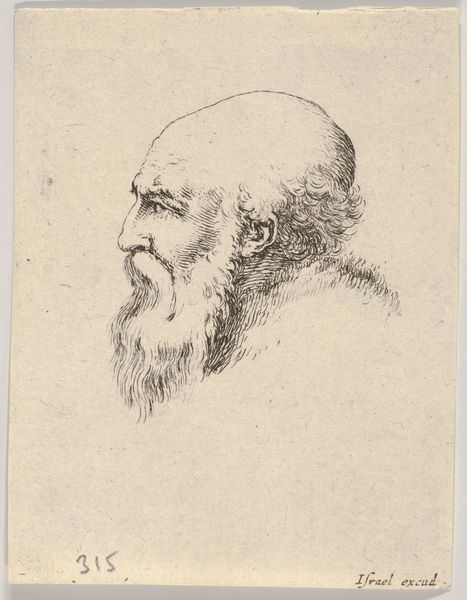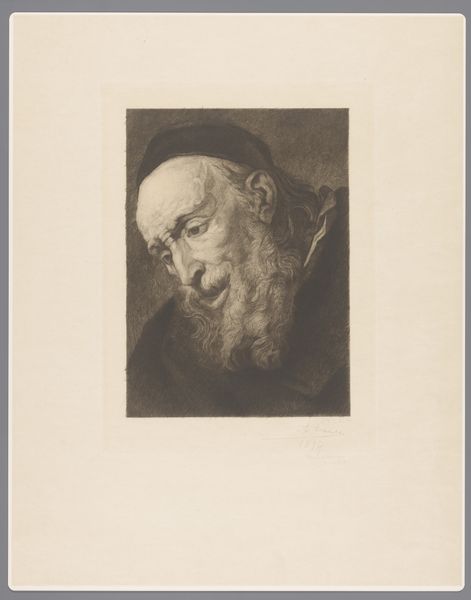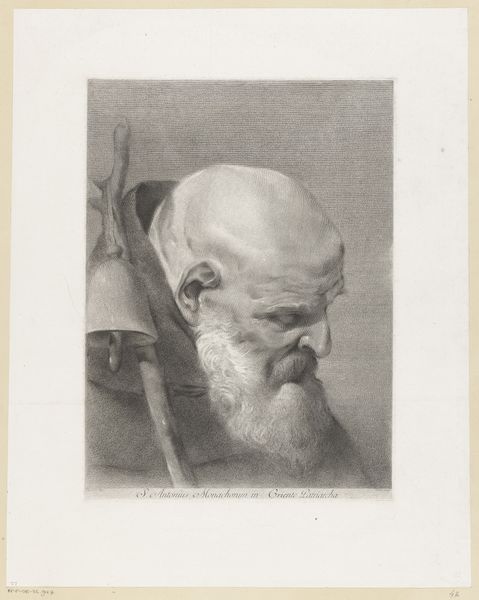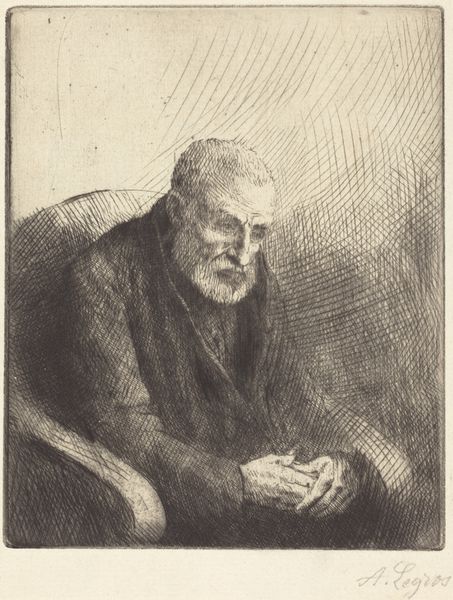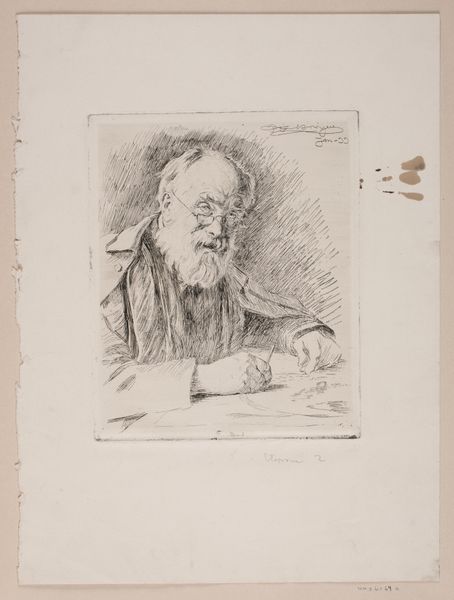
drawing, pencil
#
portrait
#
drawing
#
pencil
Dimensions: height 60 cm, width 40 cm
Copyright: Rijks Museum: Open Domain
Jan Veth’s print "Adolph Menzel" utilizes lithography, a process where an image is drawn on a stone or metal plate with a greasy substance, then printed. This technique allows for detailed replication, a key development in the late 19th century. The lithographic process democratized image production, making art more accessible and influencing the rise of mass media. The qualities inherent in lithography – its reproducibility, its capacity to capture subtle tonal variations through the application of grease, and its suitability for both text and image – are all on display here. Veth masterfully uses these attributes to create an intimate portrait, showing Menzel at work. Considering the social context, lithography played a role in shaping public opinion and visual culture. By focusing on the material and process, we see how printmaking intertwines art, labor, and the broader currents of society. This challenges the traditional hierarchy separating fine art and printed matter.
Comments
No comments
Be the first to comment and join the conversation on the ultimate creative platform.
